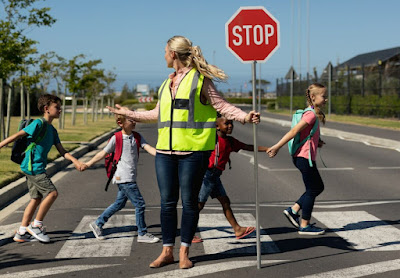📅 Observed annually on October 24 (or the closest weekday if it falls on a weekend)
🚧 Honoring the Guardians of Order on the Road
National Traffic Directors Day is a tribute to the unsung heroes who stand at intersections, school zones, construction sites, and event venues, guiding the pulse of our cities—traffic. While we often take their presence for granted, these individuals play a critical role in ensuring safety, order, and flow on some of the busiest and most dangerous spots in public life.
Their job is more than just waving hands or signaling with batons. It’s about reading movement, making split-second decisions, and often putting themselves at risk for the safety of strangers.
🦺 Who Are Traffic Directors?
Traffic directors include:
-
🚓 Police officers and public safety officials
-
👷 Construction flaggers at roadwork zones
-
🚶 School crossing guards protecting children
-
🎫 Event staff directing pedestrians and parking
-
🚨 Emergency personnel managing traffic during crises
Each of them contributes to a smoother, safer commute—rain or shine.
🙏 A Day to Appreciate
Imagine standing in the middle of a chaotic intersection, relying on instinct, visibility, and trust in human behavior. Now add the pressure of angry horns, distracted drivers, and harsh weather. That’s the daily reality for traffic directors.
National Traffic Directors Day is a reminder to say thank you, slow down, and follow their guidance with respect. It's also an opportunity for cities and communities to recognize their work through:
-
💐 Public acknowledgment or small ceremonies
-
📝 Safety training spotlights
-
🎖️ Awards and certificates of appreciation
🎨 CRA ARTS Reflection: Motion as Art
As an artist, I see traffic directors as choreographers of motion—orchestrating a living, flowing ballet of vehicles and humans. Their rhythmic signals and watchful eyes create an unseen art of movement and pause.
🔦 If you’re an artist or photographer:
-
Try capturing the fluid motion of a busy street under a traffic director’s control
-
Use symbolic elements like red-yellow-green to explore order vs. chaos
-
Paint or sketch the heroic silhouettes of those who guide us every day
🚙 How You Can Observe This Day
-
👋 Give a warm thank you or wave to a traffic director
-
📷 Share a photo on social media with a message of gratitude
-
🧠 Educate children about the importance of obeying traffic signals and personnel
-
✍️ Write a blog or note of appreciation from your community or school
🛑 A Final Thought
“In the world’s fast and reckless lanes,
There stands a guide, who bears the strain.
A single hand can stop or go—
A silent poem in motion’s flow.”
— CRA
📚 Read More Insights and Artistic Reflections
Visit my blog for more inspiring content blending culture, awareness, and creativity:
🔗 https://craarts.blogspot.com

Comments
Post a Comment